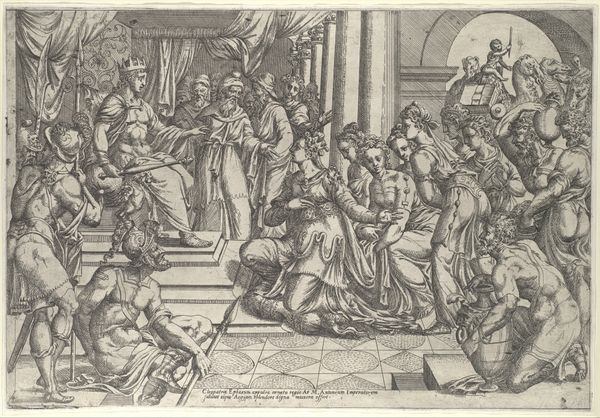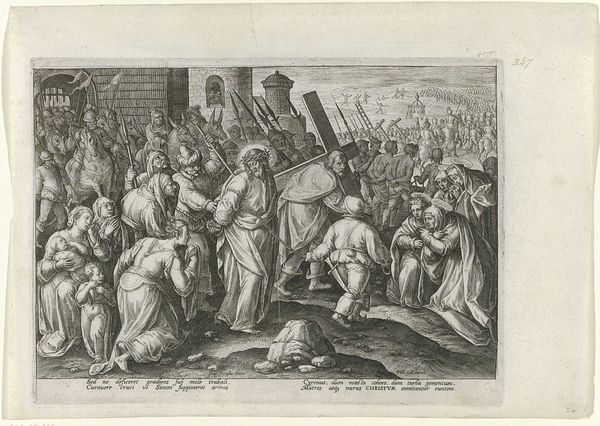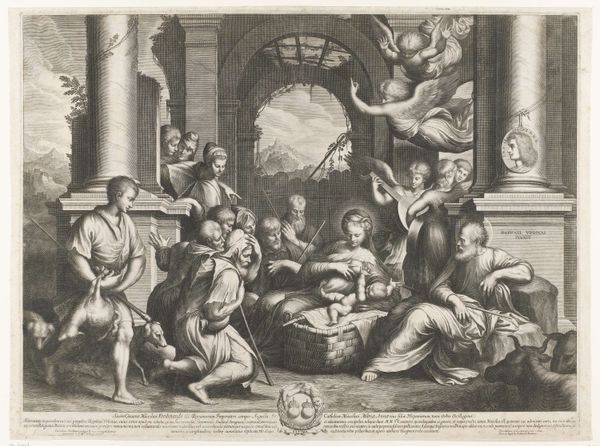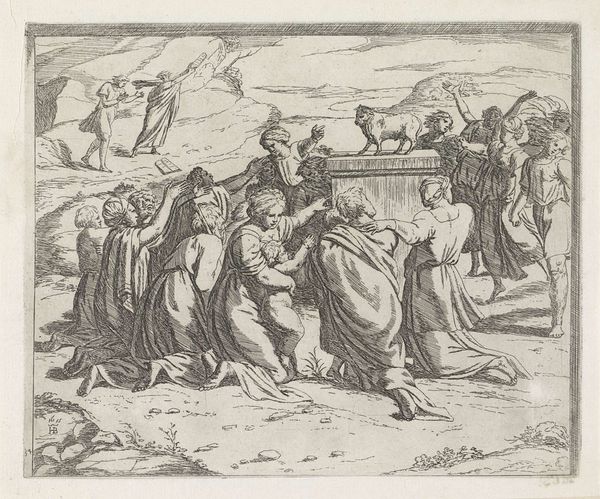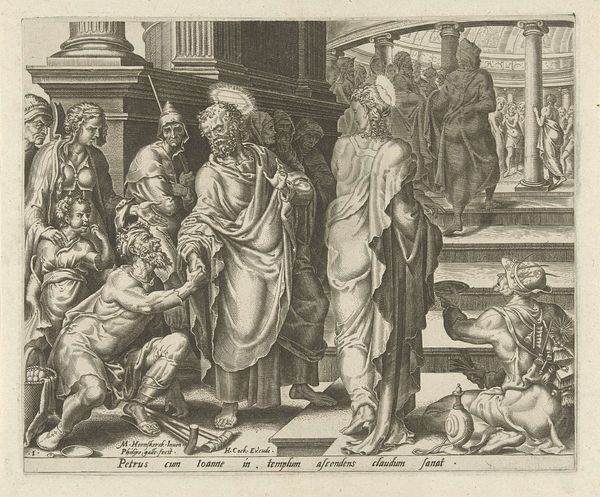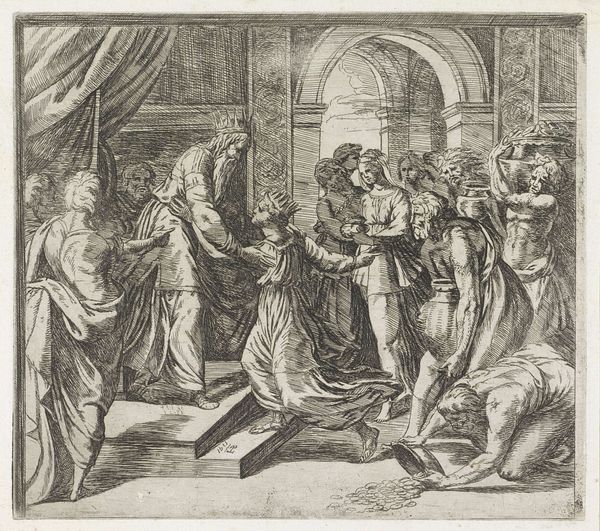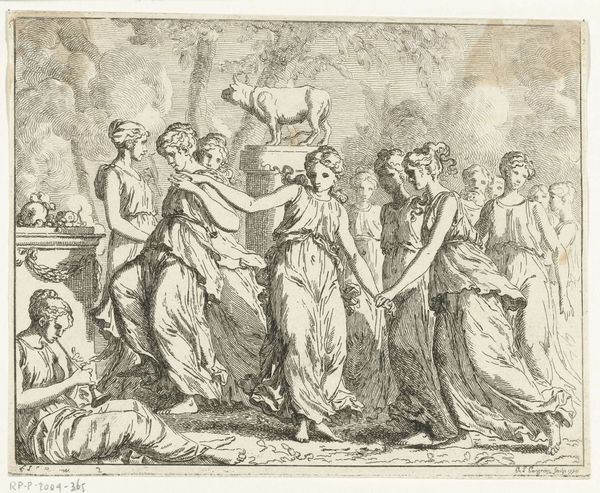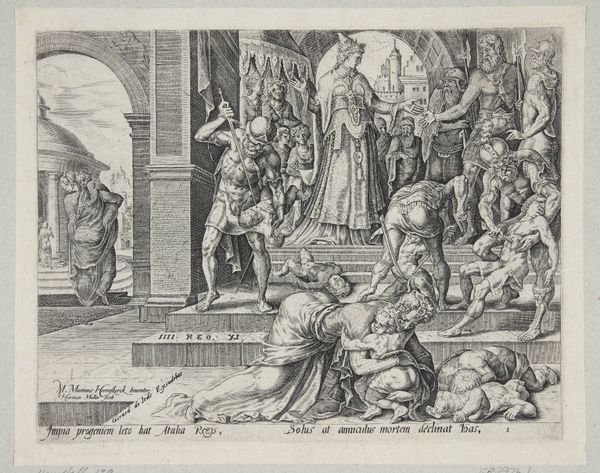
etching, ink, engraving
#
narrative-art
#
baroque
#
dutch-golden-age
#
pen illustration
#
etching
#
pencil sketch
#
classical-realism
#
figuration
#
ink
#
sketchbook drawing
#
history-painting
#
engraving
Dimensions: height 199 mm, width 256 mm
Copyright: Rijks Museum: Open Domain
Curator: Theodoor van Thulden's "Odysseus ontvangt van Aeolus de zak met tegenwinden," created around 1632, captures a pivotal moment from Homer's Odyssey. The medium is an etching or engraving, meticulously rendered with fine lines. What's your first impression? Editor: Well, beyond the classical realism, it's the texture that gets me—the tangible feel of the etching itself. I can almost trace the grooves made by the engraver's tool. It gives the scene an unexpected roughness, a physicality that counters the idealized forms of the figures. Curator: Yes, the contrast is striking! Those idealized figures remind me of the symbolic power of classical art, how artists looked to antiquity for archetypes of heroism and moral fortitude. Odysseus embodies resilience, doesn't he? Aeolus, with that bag, embodies divine intervention...or manipulation. Editor: Right, but what I find even more compelling is thinking about who this print was made for. An etching like this suggests a market, a growing audience able to access and consume art that wasn’t only for the wealthy elite. Prints made art more democratized. Curator: Absolutely! And through that democratization, we see the continuation of stories and values. Think of how the "Odyssey" resonated through generations, this etching a node in that long chain. Even the image of the "wind bag," it serves as a universal symbol for risks taken, deals gone bad. Editor: It also reflects the craftsmanship and labor of the printmaker. This wasn’t simply artistic genius in a vacuum; it involved the skills and techniques passed down through workshops. You can almost feel the hand of the artist carefully etching each line. And what inks did he use? How was the paper made? Curator: Those questions highlight how interwoven art and social practices always are! A tale of mythology told through emerging industrial and economic realities. A meeting of myth and making. Editor: Precisely. It encourages us to think about the process behind the product, not just the story being illustrated. Curator: A refreshing lens through which to appreciate a timeless epic! Editor: Indeed. It is in considering the making of the art that the artwork itself gains new relevance.
Comments
No comments
Be the first to comment and join the conversation on the ultimate creative platform.

